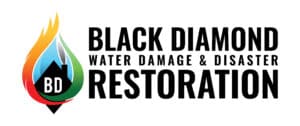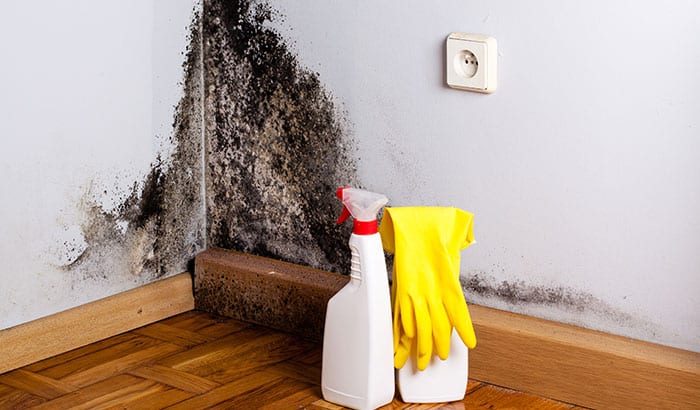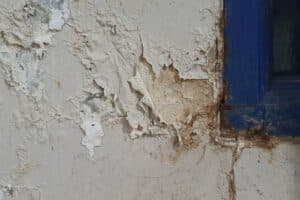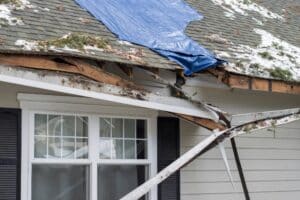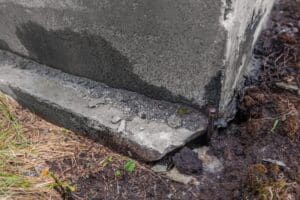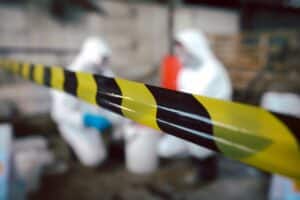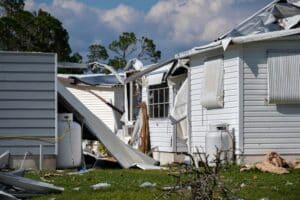Mold damage leads to mold poisoning, which is unwanted in any household. There are several things to look out for in your home that can lead to the growth of mold, including:
- High humidity levels: When the humidity in your home is high, it creates the perfect environment for mold to grow. Mold thrives in moist environments, so if the humidity in your home is consistently high, you may be at risk for mold growth.
- Leaking pipes: Leaking pipes or appliances can create a moist environment that promotes mold growth. If you have a leaky pipe, it’s important to fix it immediately to prevent mold from growing.
- Poor ventilation: Proper ventilation is important for preventing mold growth. If your home is poorly ventilated, moisture can accumulate, creating a prime breeding ground for mold.
- Roof leaks: A leaky roof can create water damage in your home, leading to mold growth. If you notice any water stains on your ceiling or walls, it’s important to address the issue immediately.
- Flooding: If your home has experienced flooding, there’s a high likelihood of mold growth. Flood waters can introduce mold spores into your home and create a moist environment for mold to thrive.
- Condensation: When warm, moist air comes into contact with a cooler surface, it can create condensation. This can create a moist environment that is conducive to mold growth.
- Damp basements: If your basement is damp or prone to flooding, it’s important to address the issue to prevent mold growth. Basements are often cooler and more humid than other parts of the home, making them a prime location for mold growth.
- Poorly sealed windows and doors: If they are poorly sealed, they can allow moisture to enter your home. This can create a moist environment that promotes mold growth.
- Poor insulation: Poor insulation can lead to temperature fluctuations in your home, creating a moist environment conducive to mold growth.
- Delayed water damage repair: If you have experienced water damage in your home and haven’t repaired it properly or quickly, it can create a perfect environment for mold growth. Mold can begin to grow in as little as 24-48 hours after water damage occurs, so it’s essential to address any water damage right away to prevent mold growth.
How can you identify poisonous mold in your home?
Several types of poisonous mold can cause health problems and toxicity in humans. Here are some of the most common types of mold that are found in homes and how to identify them:
- Stachybotrys chartarum (Black Mold): This type of mold is commonly referred to as “black mold” and is known for its toxic properties. It appears as a black or dark green mold with a slimy texture. It thrives in damp and warm areas, such as bathrooms, basements, and kitchens.
- Aspergillus: There are many different types of Aspergillus mold, some of which are toxic. Aspergillus mold can appear in various colors, including black, green, yellow, and brown. It often grows on walls, ceilings, and insulation in damp areas of the home.
- Penicillium: This type of mold is commonly found in water-damaged areas of the home and can appear as green, blue, or white in color. It can cause respiratory problems, allergic reactions, and asthma in some people.
- Cladosporium: This mold is typically found in damp areas such as basements and bathrooms. It can appear as black or green and has a powdery texture. It can cause respiratory problems, such as asthma, in some people.
- Alternaria: This type of mold is often found in damp areas of the home, such as bathrooms and kitchens. It can appear as black or brown and has a velvety texture. It can cause respiratory problems and allergic reactions in some people.
To identify mold in your home, look for visible signs of mold growth, such as discoloration on walls or ceilings, a musty smell, or water stains. It’s important to address any underlying moisture issues in your home to prevent mold damage in the future.
Mold is mold. Right? Well, the growth of any mold in your home can be hazardous to your health. Let’s take a specific and closer look at the answer to this question – What are the health effects of black mold?
Black mold, also known as Stachybotrys chartarum, can produce mycotoxins that can have adverse health effects on people who are exposed to it. Here are some of the health effects of black mold:
- Respiratory problems: Exposure to black mold can cause respiratory problems, such as wheezing, coughing, and difficulty breathing. These symptoms can be especially problematic for people with asthma or other respiratory conditions.
- Allergic reactions: Exposure to black mold can cause allergic reactions, such as sneezing, runny nose, and red eyes. Some people may develop a rash or hives after exposure to black mold.
- Headaches: Exposure to black mold can cause headaches, especially if the person is sensitive to the mycotoxins produced by the mold.
- Fatigue: Exposure to black mold can cause fatigue and weakness. This is thought to be due to the immune system’s response to the mycotoxins produced by the mold.
- Neurological symptoms: There have been reports of neurological symptoms, such as tremors, confusion, and memory loss, in people exposed to black mold. However, more research is needed to determine the link between black mold exposure and neurological symptoms.
It’s important to note that not everyone exposed to black mold will experience these symptoms, and the severity of the symptoms can vary depending on the individual and the extent of the exposure. If you suspect you have been exposed to black mold and are experiencing symptoms, seeking medical attention is important.
Not to fret; a professional is here to help. Specifically, Black Diamond Water Damage & Restoration is available. Our experts are ready to rid your home of harmful mold growth. Call us at (801) 512-4194, and let us eradicate your mold problem today!
